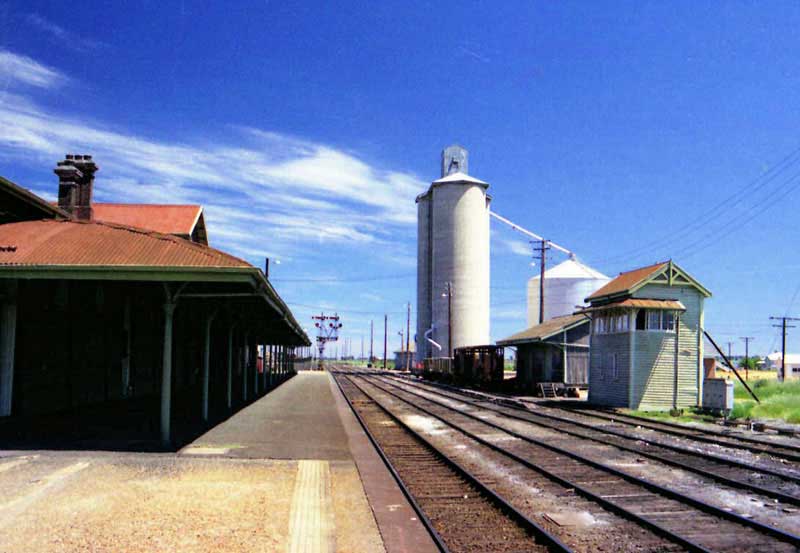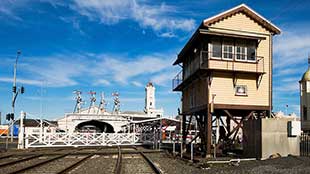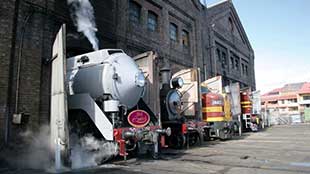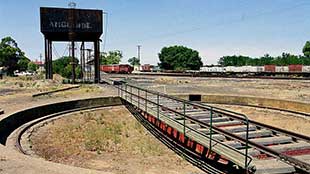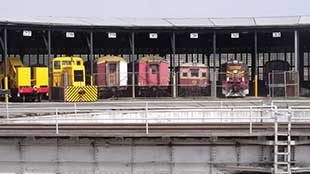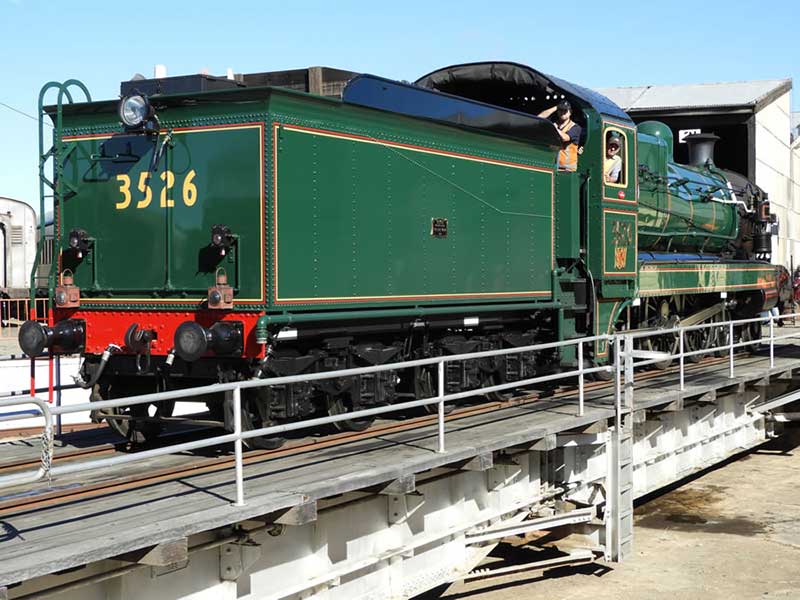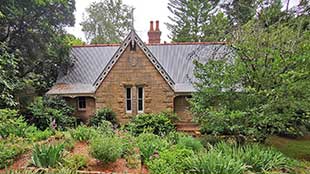Multiple unit passenger trains: New South Wales
Waratah (A and B set) Trains
The Sydney Trains A & B sets, also referred to as the Waratah trains, are classes of electric multiple units that currently operate on the Sydney Trains network. The Waratahs are based on the M sets, and were manufactured by a joint consortium between CRRC Changchun and Downer Rail, with initial construction taking place overseas in Changchun before final assembly at Downer Rail's Cardiff Locomotive Workshops. The sets were named after the Waratah flower, which is the state's floral emblem.
The Waratah was designed at the Downer EDI Rail design offices, then at Clyde, New South Wales & Maryborough Queensland. The sets are formed of eight carriages – a break from the previous standard Sydney practice of four car sets, which are then coupled to form eight-car trains. The configuration is: driving trailer car + motor car + motor car + trailer car + trailer car + motor car + motor car + driving trailer car. This means that guards operate from the rear of the train rather than the centre and that commuters are able to walk through the entire train in an emergency. The trains include external CCTV cameras to assist guards.
Millennium (M set) Trains
The Sydney Trains M sets, also referred to as the Millennium trains, are a class of electric multiple units that operate on the Sydney Trains network. Built by EDi Rail between 2002 and 2005, the first sets initially entered service under the CityRail brand on 1 July 2002 after short delays due to electrical defects. The M sets were built as "fourth generation" trains for Sydney's suburban rail fleet, replacing the 1960s Tulloch carriages and providing extra capacity on the suburban rail network.
NSW TrainLink H Set
The NSW TrainLink H sets, also referred to as the OSCAR (Outer Suburban CAR) trains, are a class of electric multiple units currently operated by NSW TrainLink. Built by UGL Rail in Broadmeadow, the H sets first entered service under the CityRail brand in December 2006, with the last in December 2012. Their introduction allowed for the retirement of some V set carriages (DCM and DCT). As long-distance trains, the H sets share a similar overall layout and design to the previous G sets. Currently operating as 55 four-carriage sets, the H sets now operate between Sydney and Newcastle and between Sydney and the South Coast.
NSW TrainLink D Set
The NSW TrainLink D sets, also referred to as the Mariyung trains, are a class of electric multiple units being built to replace NSW TrainLink's Intercity electric multiple unit fleet, replacing the entire V set fleet and allowing the H sets to be reallocated to Sydney suburban services. The trains will operate on services from Sydney to Newcastle, Lithgow and Kiama. In 2015 the project reached a $1.1B blowout due to modifications that were required for the design of the train, changing proportions from almost identical to the V sets to the standard suburban double decker proportions. The first trains were delivered in December 2019, and entered service by December 2022.
Sydney Metro Metropolis Stock
The Sydney Metro Metropolis Stock is a class of electric multiple units that operate on the Sydney Metro network. Built by Alstom as part of their Metropolis family, the trains are the first fully automated passenger rolling stock in Australia as well as the first single-deck sets to operate in Sydney since their withdrawal from the suburban rail network in the 1990s. A total of 176 carriages, making up 22 6-car sets, entered service in 2019 with the opening of the Metro North West Line. 23 more sets will be rolled out for the City & Southwest extension, commencing service in 2024, which will expand the Metropolis fleet to 45 sets.

New South Wales Trainlink V set Trains
The V sets are a class of electric multiple units currently operated by NSW TrainLink. Built by Comeng between 1970 and 1989, the sets are of stainless steel construction, and are currently the oldest in the NSW TrainLink fleet. Initially introduced under the Public Transport Commission, only sets from 1977 and onwards remain in service, now operating on Interurban services throughout New South Wales on the Main Western line to Lithgow and Main Northern line to Newcastle. The V sets were delivered over a 19-year period from 1970.
New South Wales Trainlink Tangara (T set) Trains
The Tangara is a double-deck four-car set, with the two outer cars being driving control trailers that are fitted with one pantograph each and the middle two cars being non-control motor cars (carrying an N prefix). All sets are equipped with chopper control. Built by A Goninan & Co, the sets entered service between 1988 and 1995, initially under the State Rail Authority and later CityRail. The T sets were built as "third-generation" trains for Sydney's rail fleet, coinciding with the final withdrawals of the "Red Rattler" sets from service in the late 1980s and early 1990s. Unlike most other Sydney Trains rolling stock, the seats on the suburban T sets are fixed, meaning that half the seats face backwards. Former G sets, however, do have reversible seats.
New South Wales Trainlink U set trains
The U sets were a type of electric multiple unit operated by the New South Wales Government Railways and its successors between September 1958 and November 1996. They were nicknamed U-boats. The New South Wales Government Railways began planning the electrification of the Main Western line over the Blue Mountains from 1949, and with that plan in full swing by the early 1950s, called tenders for 80 cars (40 motor, 20 trailer and 20 first with buffet trailer), with the contract was awarded to Commonwealth Engineering, Granville in 1954. The U Sets started to be delivered from June 1957, and the first sets made their first public appearances that same year. Withdrawal of the sets began in 1994 as new Tangara G sets began replacing them.
New South Wales Trainlink S set trains
The S sets were electric multiple units that operated on Sydney's suburban rail network from 1972 up until 2019. Originally entering service under the Public Transport Commission, the sets also operated under the State Rail Authority, CityRail and Sydney Trains. Prior to their retirement, the S sets were the last class in the Sydney Trains fleet to not be air-conditioned, earning them the nicknames "Tin cans" and "Sweat Sets". They were also nicknamed "Ridgys" because of their fluted ("ridged") stainless steel panelling; they shared this nickname with similar looking K sets and C sets. The final sets were withdrawn from service in June 2019.
New South Wales Trainlink K set trains
The Sydney Trains K sets are electric multiple units that currently operate on the Sydney Trains network. Built by A Goninan & Co, the K sets first entered service in 1981 operating under the State Rail Authority, and later CityRail. The carriages are of stainless steel, double deck construction and share much of their design with the older S sets. All of the 40 K sets originally built (160 carriages) remain in service and are currently the oldest in the Sydney Trains fleet. The K sets were the first New South Wales suburban trains to be air conditioned and have headlights. K sets were regularly used on Intercity services.
New South Wales Trainlink C set trains
The C sets were electric multiple units that operated on Sydney's suburban rail network from 1986 up until 2021. Built by A Goninan & Co between 1986 and 1987, they were introduced into service by the State Rail Authority, before later being operated under CityRail and Sydney Trains. A total of 56 carriages were built, with the last sets being withdrawn from service in February 2021, having been gradually replaced by A & B set trains. The C sets were a follow-on from the K sets.
New South Wales Tulloch double deck carriage stock
The New South Wales Tulloch double deck carriage stock was a class of electric multiple unit carriages operated by the New South Wales Government Railways and its successors between 1964 and 2004. In February 1964, the first of 120 double deck trailers was delivered by Tulloch Limited to the New South Wales Government Railways. These were purchased to replace wooden carriage stock from Sydney's suburban fleet. The first 40 were built with power operated doors to operate with the Sputnik power cars, the remaining 80 were fitted with manually operated doors for operation with the Suburban and Tulloch stock.

New South Wales Tulloch suburban carriage stock
The New South Wales Tulloch suburban carriage stock were a type of electric multiple unit operated by the New South Wales Government Railways and its successors between 1940 and 1992. In 1940, 24 first series power cars and 24 trailer cars were built by Tulloch Limited for the New South Wales Government Railways. These differed from the 1920s built carriages in having a pillar between the doors to increase passenger circulation space. In 1951, a further three first series power cars were delivered, followed between May 1952 and March 1956 by 47 second series power cars, which featured an enlarged guard's compartment. Between July 1950 and October 1957, 105 trailer cars were built. They operated in sets with the 1920s built carriages across the Sydney suburban network.
New South Wales sputnik suburban carriage stock
The New South Wales Sputnik suburban carriage stock electric multiple unit was operated by the New South Wales Government Railways and its successors between 1957 and 1993 and served on the Sydney rail network. Between 1956 and 1960, 40 power cars and 40 trailer cars were built by Commonwealth Engineering for the New South Wales Government Railways. Broadly similar to the Tulloch built carriages, built earlier in the 1950s, they differed in having motors on all four (as opposed to two) bogies and power operated doors. They operated as eight carriage sets and were targeted as S sets, gaining the nickname Sputniks after the Russian satellite that was launched at the same time as their entry into service.
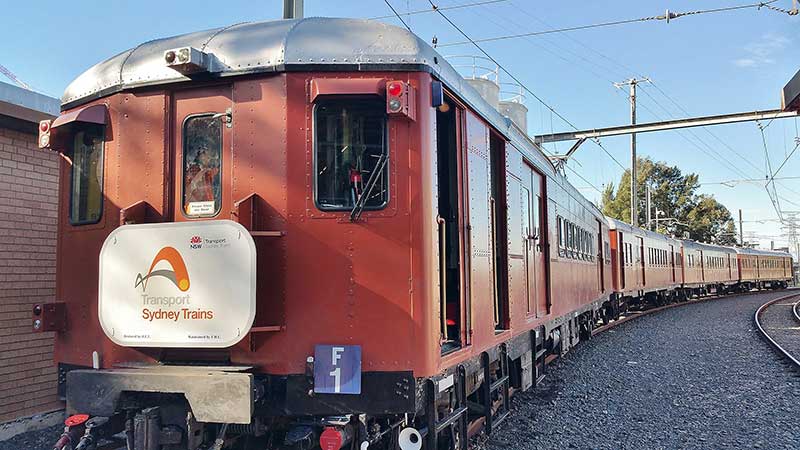
New South Wales standard suburban carriage stock
The New South Wales Standard suburban carriage stock are a class of electric multiple units that were operated by the New South Wales Government Railways and its successors between 1926 and 1992. They served on the Sydney suburban network. In the years before their withdrawal, they were nicknamed Red Rattlers. This term was imported from Victoria and was never a comtemporaneous colloquialism. The initial 50 power cars were built in England by Leeds Forge Company and shipped to Australia in knocked-down condition. Between 1926 and 1929, a further 290 power cars, 248 trailer cars and three parcel vans were built in Australia by Clyde Engineering and Walsh Island Dockyard.
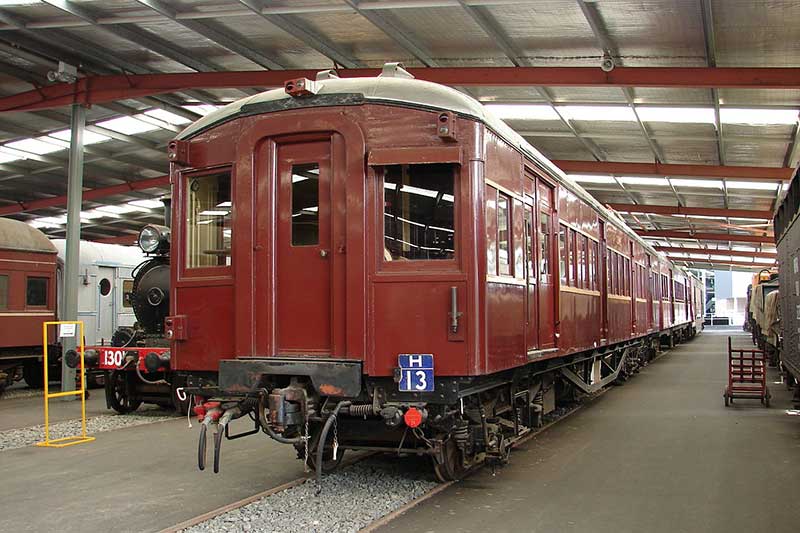
New South Wales Bradfield suburban carriage stock
The New South Wales Bradfield suburban carriage stock were a type of electric multiple unit operated by the New South Wales Government Railways and its successors between 1921 and 1975. With the electrification of the Sydney suburban network planned, in 1919 orders were placed for 100 carriages with contracts awarded to three builders, Clyde Engineering (42), Ritchie Brothers (18) and Meadowbank Manufacturing Company (40).
The carriages featured wooden bodies on steel underframes with 43 fitted out as EBB first class carriages and 57 as EBA second class. The carriages gained the Bradfield carriages nickname after the New South Wales Railway's Chief Engineer John Bradfield, even though they were designed by Chief Mechanical Engineer Edward Lucy. Bradfield carriages were the first electric train stock to cross the Sydney Harbour Bridge in 1932.
Diesel Multiple Units
TrainLink Endeavour diesel multiple unit
The Endeavour Railcars are a class of diesel multiple unit operated by NSW TrainLink on passenger rail services in New South Wales, Australia on the Hunter, Blue Mountains (to Bathurst), Southern Highlands and South Coast lines (between Kiama and Bomaderry). They are mechanically identical to the Xplorers. All 30 carriages were built by ABB Transportation in Dandenong, Victoria.
TrainLink Xplorer diesel multiple unit
The Xplorer is a class of diesel multiple unit trains built by ABB Transportation. Initially entering service in October 1993, the Xplorers are mechanically identical to the Endeavour Railcars, though feature a higher level of passenger amenity. All 23 carriages were built in Dandenong, Victoria. The Xplorers currently operate under NSW TrainLink, running on the regional Main North, Main Western and Main Southern lines throughout New South Wales.
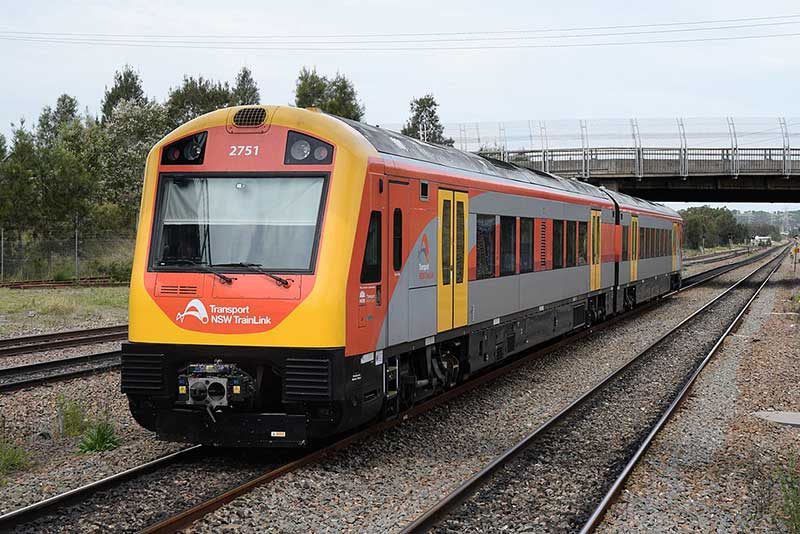
TrainLink Hunter diesel multiple unit
The Hunter diesel multiple unit are operated by NSW TrainLink on the Hunter Line in New South Wales, Australia. Built by UGL Rail between November 2006 and September 2007, they initially operated for CityRail. Each set comprises two powered cars with one having a toilet. The design of the Hunter Railcars is derived from the Transwa Prospector and AvonLink - the major difference being the driving cars are each single-engined instead of dual-engined, due to the lower top speed requirement for the Hunter line.
TrainLink XPT diesel multiple unit
The New South Wales XPT (short for eXpress Passenger Train) is a class of diesel-powered passenger trains built by Comeng and ABB Transportation. Based on the British Rail designed Intercity 125 High Speed Train, each XPT set is made up of two XP locomotives in a push-pull formation coupled to between four and seven carriages. The first sets entered service under the State Rail Authority in 1982 and now operate under NSW TrainLink, running on long-distance regional and interstate North Coast, Main Western and Main Southern lines throughout New South Wales and interstate into Victoria and Queensland. The original XPT carriages were refurbished in 1992/93 including a repaint in CountryLink livery.[39] All were refurbished again between 2005 and 2008.

